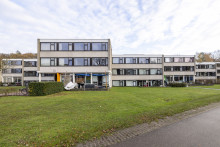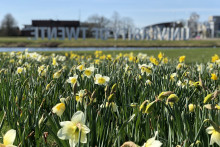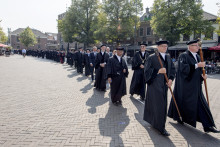The adaptation of renewables is taking off in the Netherlands. With the most solar panels per resident and the world's first subsidy-free wind park on sea, we are making significant steps. On sunny, windy days, the Netherlands generates more than it consumes. These developments are less visible on campus, but how can we benefit from these developments as a university and as a campus?
The impact of adding renewables on CO2 emissions for electricity is significant. The time of day you, for example, run your washing machine can significantly influence the emissions from it. During a sunny summer day or a windy winter night, the impact of using electricity is much lower. Currently, the university and campus residents have no incentive to change their behaviour. However, the price of electricity is often lower when there is a lot of renewable generation. If they can utilise these low prices, their behaviour can be profitably adapted with sustainable benefits!
Dynamic energy contracts, where you pay the market price of electricity for the hour you consume power, are now widely available. And it just so happens that the university’s power consumption peaks during the day, when the sun is out! In addition, some processes can be shifted to use power when the least amount of CO2 is emitted. For instance, you can think of cold generation for the air condition system (10% of all electricity) or the liquefaction of Helium. The additional savings, not only in CO2 emissions but also financially, will likely be very significant. By making demand-responsive behaviour a crucial part of operational management, the university can lead society to make the necessary changes in harmonising with wind and solar generation, especially now that the local grid is overloaded.
From 2024 onwards, the campus is becoming a large construction site as many of the student houses will be renovated by De Veste. This opportunity to redesign student housing to connect renewable generation with sustainable behaviour is unprecedented. The challenge will be to make a design without using the words living lab, AI or smart grid, but one that resonates with student culture and living. In a house with a clear incentive, such as dynamic energy prices, the adaption of profitable, sustainable behaviour comes naturally. This has already been observed on campus when the high gas prices resulted in significant savings, sometimes yielding a few hundred euros difference between residents in the same type of buildings.
At just sixty years of age, the campus is due for its mid-life-cycle renovation. Sustainability is a pre-condition in everything the university does, according to its Shaping 2030 agenda. In that case, the university should lead the way to a dynamic campus in operations and housing that resonates with sustainable generation. Through the flexible operation of the university and designing housing by the Veste with this mindset, the foundation is laid for another sixty years of productive and sustainable learning and living on campus.







